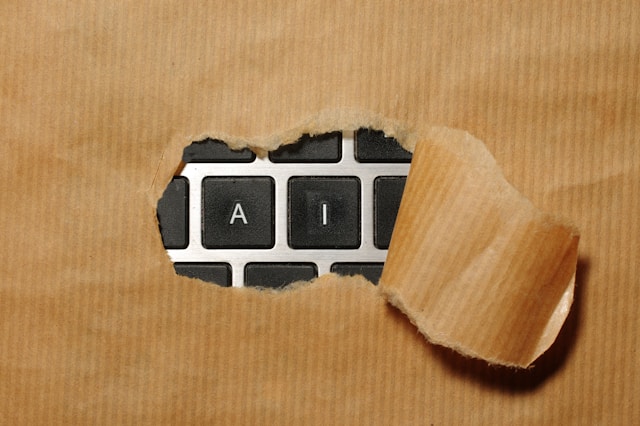AI Recruitment Analytics Diversity Goals Driving Inclusive Hiring Success

Are you trying to build a more inclusive team but unsure where to start?
AI recruitment analytics can give you the clarity and confidence to make smarter, fairer hiring decisions. With real, unbiased data about your hiring funnel, you can track diversity efforts, spot gaps, and adjust your process to attract a broader mix of talent, without slowing things down.
Using platforms like HRMLESS, you can automate tasks like screening, scheduling, and candidate engagement while minimizing bias. That keeps your focus where it belongs: on skills and potential, not surface-level details.
And with real-time insights into diversity metrics, you can stay proactive, tweaking your strategy before small gaps become big problems.
In this blog, we will talk about:
- What AI recruitment analytics is and how it supports inclusive hiring
- How to define, measure, and track diversity goals with real data
- Best practices to reduce bias and boost workplace diversity through AI
Let’s explore how data and automation can work together to help you build a stronger, more diverse team.
Understanding AI Recruitment Analytics
AI recruitment analytics gives you straightforward data to help you hire better. It tracks candidate performance, where things slow down, and how well you meet diversity goals. This makes it easier to make smart decisions and move faster.
What Is AI Recruitment Analytics?
AI recruitment analytics uses artificial intelligence to collect and break down hiring data. It measures candidate quality, people's engagement, and where candidates drop out. You get a real-time look at your hiring funnel.
This helps you spot trends, like which sources bring in more diverse candidates, or which steps cause delays. Instead of guessing, you use hard data to improve your process. For instance, you can see if your interviews are fair or if some groups aren’t making it through.
How AI Recruitment Analytics Works
AI-powered analytics turn complex hiring data into clear insights you can act on quickly.
- Resume Screening: Scans resumes automatically and scores candidates based on skills and fit.
- Pipeline Tracking: Monitors how candidates move through each stage and spots where they drop off.
- Diversity Metrics: Tracks goals like gender mix or ethnicity data without manual spreadsheets.
- Bias Detection: Flags potential process bias so you can address it before it skews hiring outcomes.
- Real-Time Updates: Platforms like ours show live metrics such as time-to-hire, dropout points, and candidate engagement.
With these insights, AI tools help refine your hiring process, cut inefficiencies, and make smarter, more inclusive decisions.
Key Technologies Powering AI in Recruitment
A few technologies drive AI recruitment analytics:
- Machine Learning: Learns from your past data to predict who’ll succeed.
- Natural Language Processing (NLP): Reads resumes and interview answers.
- Predictive Analytics: Forecasts hiring outcomes and highlights top picks.
- Automation: Handles routine stuff like scheduling and follow-ups.
Together, these make hiring faster, fairer, and more efficient. Our tool’s automation tools plug into your existing systems, keeping things smooth and helping reduce no-shows and ghosting.
Defining and Achieving Diversity Goals
Diversity goals push you to create a fairer hiring process and build a team with various backgrounds and skills. Clear targets keep you focused, show your progress, and ensure you meet your company’s standards for fairness. Measuring success with specific data keeps you honest.
What Are Diversity Goals in Recruitment?
Diversity goals are specific targets for making your hiring process fair and inclusive. You’re aiming to hire people from different races, genders, ages, and backgrounds, not just hitting numbers, but bringing in various experiences.
AI recruitment analytics lets you track how well you match these goals. Our tools can flag if certain groups aren’t making it through, so you can change things and reduce bias. Clear goals help stop unconscious preferences from creeping in.
Importance of Workplace Diversity
Workplace diversity brings in fresh ideas and new perspectives. A mix of backgrounds helps your team solve problems better and strengthens the group. It can boost employee satisfaction and lower your turnover rate.
When your team looks like your customers or your community, you build more trust and offer better service. Diversity also helps you compete as markets go global. Frankly, companies with diverse teams tend to do better financially; plenty of research supports that.
Setting Measurable Diversity Metrics
You need measurable diversity goals to make real progress. Start with clear metrics: the percentage of hires from underrepresented groups, or diversity at each step of recruitment. Tools like HRMLESS give you real-time analytics to track this without the headache.
Compare your hiring data over time with regular reports. Use what you find to adjust job descriptions, source candidates differently, or tweak your AI screening to keep things fair.
A few key metrics worth tracking:
- Candidate demographics at each stage
- Interview-to-offer rates by group
- Time-to-hire differences across groups
Having these numbers keeps your team accountable and helps make hiring actually inclusive.
Integrating AI Recruitment Analytics With Diversity Initiatives
You can use AI recruitment analytics to back up your diversity work in specific, practical ways. Align your data with your diversity goals, spot and reduce bias in your AI, and keep an eye on diversity in real time. These steps help you build fairer hiring without slowing things down.
Aligning AI Analytics With Diversity Strategies
First, set clear diversity goals for hiring. Use AI analytics to track candidate data like demographics, skills, and progress at each stage. This helps you see if certain groups face barriers or aren’t moving forward. Create reports to show how your results stack up against your goals. If things aren’t matching up, you can act fast, maybe by expanding your candidate sources or changing job descriptions.
Choose an AI platform that integrates well with your existing tools. Our tool, for instance, has dashboards that highlight how hiring aligns with diversity goals. This lets you manage diversity thoughtfully without a lot of extra work.
Identifying and Reducing Bias in AI Tools
AI can pick up bias if it’s trained on unfair data. To avoid this, pick software trained on diverse data sets and keep testing your models to ensure they treat everyone equally. Look for AI platforms that use consistent screening and scoring standards. This helps keep things fair and avoids hidden biases.
Don’t let AI make all the calls; combine its scores with a human review. Recruiters should check AI decisions and add their take on soft skills and culture fit. This combo helps catch any bias the AI might miss.
Real-Time Diversity Tracking Features
Real-time data helps you watch diversity at every step. You can see which groups are applying, who’s moving to interviews, and who’s getting offers. This makes it easier to spot problems early, like bottlenecks or certain groups dropping out. Some platforms (ours included) give you dashboards with alerts and summaries. You get a clear view of your hiring funnel, so you can make quick changes.
Tracking in real time keeps your diversity work active. You avoid nasty surprises, and every step supports fair hiring, all while keeping things moving.
Benefits of AI Recruitment Analytics for Diversity Efforts
AI analytics in recruitment helps you make smarter, fairer choices. It shines a light on diversity, streamlines screening, and enables you to find candidates you might have missed. This way, you build a broader, more inclusive talent pool.
Data-Driven Diversity Hiring Decisions
AI recruitment analytics give you clear numbers on hiring patterns. You can spot where your pipeline lacks diversity by tracking candidate demographics, interview rates, and offer acceptance. You can adjust job ads or sourcing channels to reduce bias with that data.
Tools like ours give you real-time insights so you can react quickly. For example, if not enough women apply, you can tweak your messaging or reach out to new networks right away. Data-driven decisions make diversity goals real, not just wishful thinking.
Enhanced Candidate Screening
AI tools automate screening to focus on skills and experience, not gut feelings or unconscious bias. They score resumes and interviews for job fit, using the same standards for everyone, giving every candidate a fair shot.
You also save time by skipping manual reviews of applications that aren’t a fit. Automated pre-screening means only qualified candidates move forward. That cuts down on ghosting and keeps your process moving, while supporting diversity.
Uncovering Hidden Talent Pools
AI recruitment analytics can help you find untapped talent pools you might ignore. By digging into data from different sources, AI spots candidates with potential, even if they didn’t follow the usual paths. Maybe they went to a smaller school or worked in another industry.
You can also use AI to reach more diverse groups with targeted messages. HRMLESS automates this outreach and keeps candidates engaged, boosting diversity without adding extra work. Finding hidden talent helps you fill roles faster, with people from all backgrounds.
Challenges and Ethical Considerations
Using AI recruitment analytics to meet diversity goals isn’t always simple. You’ll run into issues like hidden algorithm bias, legal requirements, and ensuring your process stays open and fair. Each of these shapes how well AI works for your team and candidates.
Potential Biases in AI Recruitment
AI tools can speed things up, but they might pick up bias from the data they’re trained on. If your past hiring favored some groups, the AI could end up unfairly screening out others. That’s a big problem for diversity.
To fight bias, you should:
- Regularly review and update AI models for fairness
- Train your AI on diverse data sets
- Combine AI results with human judgment; do not just rely on the tech
Our tool’s AI is built to help spot bias early, but honestly, you still need to monitor outcomes to protect candidates’ rights.
Regulatory and Compliance Issues
AI hiring tools must follow laws that protect job seekers and ensure everyone gets a fair shot. Different places have rules about collecting and using candidate data, especially sensitive stuff. Mess up here, and you could face legal trouble or hurt your reputation.
To stay compliant:
- Protect applicant privacy and data security
- Follow employment laws on discrimination and fairness
- Keep records to prove you’re meeting legal requirements
Platforms like ours are built with compliance in mind, so they help you keep sensitive data safe and follow the rules.
Ensuring Transparency and Accountability
Candidates want to know how AI affects their job chances. If your tools work like a black box, that kills trust and can damage your brand. Transparency means explaining how AI evaluates candidates and what it means for them.
Build transparency by:
- Sharing how AI scores and ranks applicants
- Letting candidates ask questions or appeal decisions
- Monitoring AI decisions to catch errors or unfairness
Holding your AI system accountable makes things fairer and encourages more diverse talent to apply. It shows you care about every candidate’s voice.
Best Practices for Using AI Recruitment Analytics to Meet Diversity Goals
To use AI recruitment analytics well, pick the right tools, train your team, and check your process regularly. These steps help you reduce bias, speed up hiring, and reach your diversity goals.
Selecting the Right AI Recruitment Tools
Choose tools that aim to remove bias from hiring. Look for AI that screens candidates based on skills and experience, not personal details. Tools with real-time analytics can help you see if any groups are being overlooked. Ensure your AI does automated pre-screening, so every candidate is judged fairly and consistently.
Features like scoring and filtering help you spot top talent without bias. Also, check if it integrates with your current systems to keep things running smoothly. If you want to keep candidates engaged around the clock, look for AI tools with automated scheduling and SMS reminders that help reduce no-shows and keep everyone in the process longer, no matter their background. Our tool offers these features to help you meet diversity goals efficiently.
Training and Supporting Hiring Teams
Your team needs to know how to use AI tools correctly. Train them to interpret AI data, but remind them not to rely solely on algorithms. AI should help with decisions, not make them for you. Teach recruiters to spot bias patterns flagged by analytics. Encourage them to ask whether the tools support diverse hiring or accidentally shut out some groups. This kind of awareness keeps your team accountable.
Support your hiring staff with guides and regular check-ins. Invite questions and honest conversations about fairness and how AI shapes decisions. That way, everyone stays on track with your diversity goals.
Continuous Monitoring and Improvement
AI recruitment analytics isn’t something you just turn on and forget about. You’ve got to check your data regularly; otherwise, you might miss problems like certain groups getting stuck or moving too slowly through your pipeline. Dashboards can help you see how candidates move through each stage. Tie your KPIs directly to diversity efforts. For example, track what percentage of diverse candidates make it past pre-screening or land interviews. Notice a gap? Don’t just leave it, tweak your AI settings or adjust what recruiters are doing.
Listen to feedback from candidates and hiring teams. Their input can highlight where things aren’t working. Better data leads to smarter decisions and, honestly, a fairer system overall. Tools like ours give you practical insights so you can keep nudging your diversity goals forward daily.
Future Trends in AI Recruitment Analytics and Diversity
AI recruitment analytics is moving fast. New tools are coming out all the time, changing how you find people and helping you hit your diversity targets. Some of these trends might surprise you, but they’re all about making hiring smarter and fairer.
Emerging Innovations in AI Hiring
AIs are now analyzing candidate data in real time. You’ll probably see more predictive analytics, stuff that tries to guess who’ll succeed by looking at resumes, assessments, interviews, you name it. Automation’s taking over more, too. Think multi-channel engagement: SMS, emails, whatever keeps candidates in the loop. Voice engagement is starting to pop up, letting candidates answer questions naturally. It’s a little more human, a little less robotic.
Platforms like ours are pushing automation even further. Scheduling, reminders, and cutting down on no-shows all add up to hours saved and less busywork. These updates help you hire faster without drowning in manual tasks.
Long-Term Impact on Workplace Diversity
AI recruitment tools help level the playing field by standardizing candidate evaluations. They focus on skills and hard data instead of gut feelings, which cuts down on bias. Automated screening and scoring can help you spot great candidates you might’ve missed. Tracking diversity metrics in real time allows you to shift your strategy if something’s off. Over time, this leads to teams reflecting your diversity goals, not just on paper.
With AI dashboards, you’ll have more control over setting and measuring diversity goals. HRMLESS, for example, gives you tools to monitor engagement and candidate quality without bogging down your process.
Wrapping It Up
Building a diverse team isn’t just a checkbox; it’s a long-term commitment to fairness, innovation, and real representation. With AI recruitment analytics, you finally have the tools to back that commitment with data, speed, and consistency. From spotting bias early to tracking diversity progress in real time, platforms like HRMLESS make hiring smarter without losing the human touch easier.
Ready to bring inclusion and efficiency together? Start your free trial or book a demo to see how HRMLESS helps you reduce bias, hit your diversity goals, and hire with confidence, without the chaos.
Frequently Asked Questions
AI recruitment analytics can boost fairness, help you measure diversity, and set clearer goals. But let’s be real, it also means you’ve got to watch out for ethical issues, transparency, and bias. If you don’t, all those fancy tools won’t mean much.
Can AI help identify job description language that may discourage diverse candidates?
Yes. AI can scan job descriptions to detect biased or exclusive wording and suggest inclusive alternatives, helping you attract a broader, more diverse talent pool from the very first touchpoint.
How often should we audit our AI recruitment analytics for fairness?
At least once every quarter. Regular audits ensure your AI stays aligned with fairness goals, helps catch hidden bias, and keeps your hiring process legally and ethically sound.
Can AI help personalize outreach for underrepresented candidates?
Absolutely. AI tools analyze candidate behavior and profiles to send tailored messages that feel relevant and personal—boosting engagement and response rates among underrepresented groups.
Does AI support disability-inclusive hiring practices?
Yes. Some platforms can flag accessibility barriers in your hiring process, helping ensure candidates with disabilities have equal opportunity to apply, engage, and succeed.
Are there risks of over-filtering with AI in diversity hiring?
Yes. If filters are too strict, you might exclude qualified candidates. Always pair automation with human oversight to avoid missing out on great talent.
Featured
Subscribe to ournewsletter
Related posts
Explore the world of photography with our curated selection of
portfolio websites that showcase creativity and innovation.





